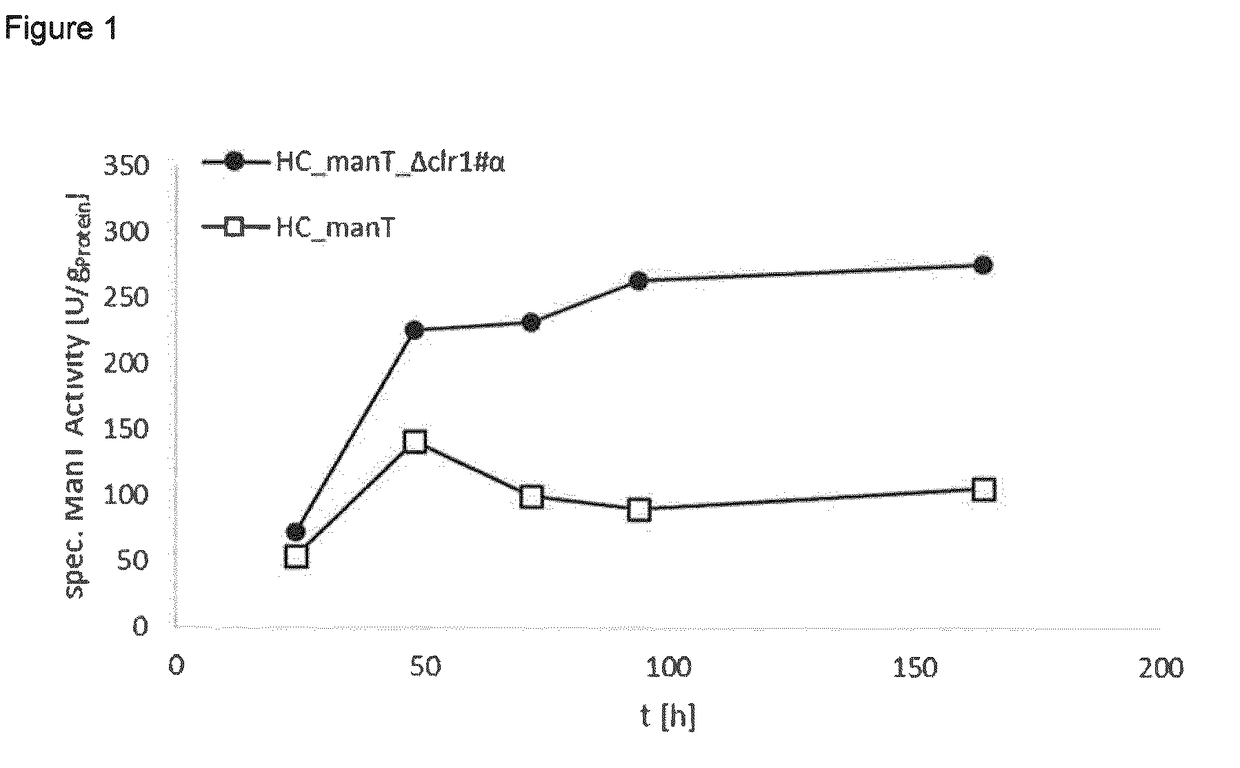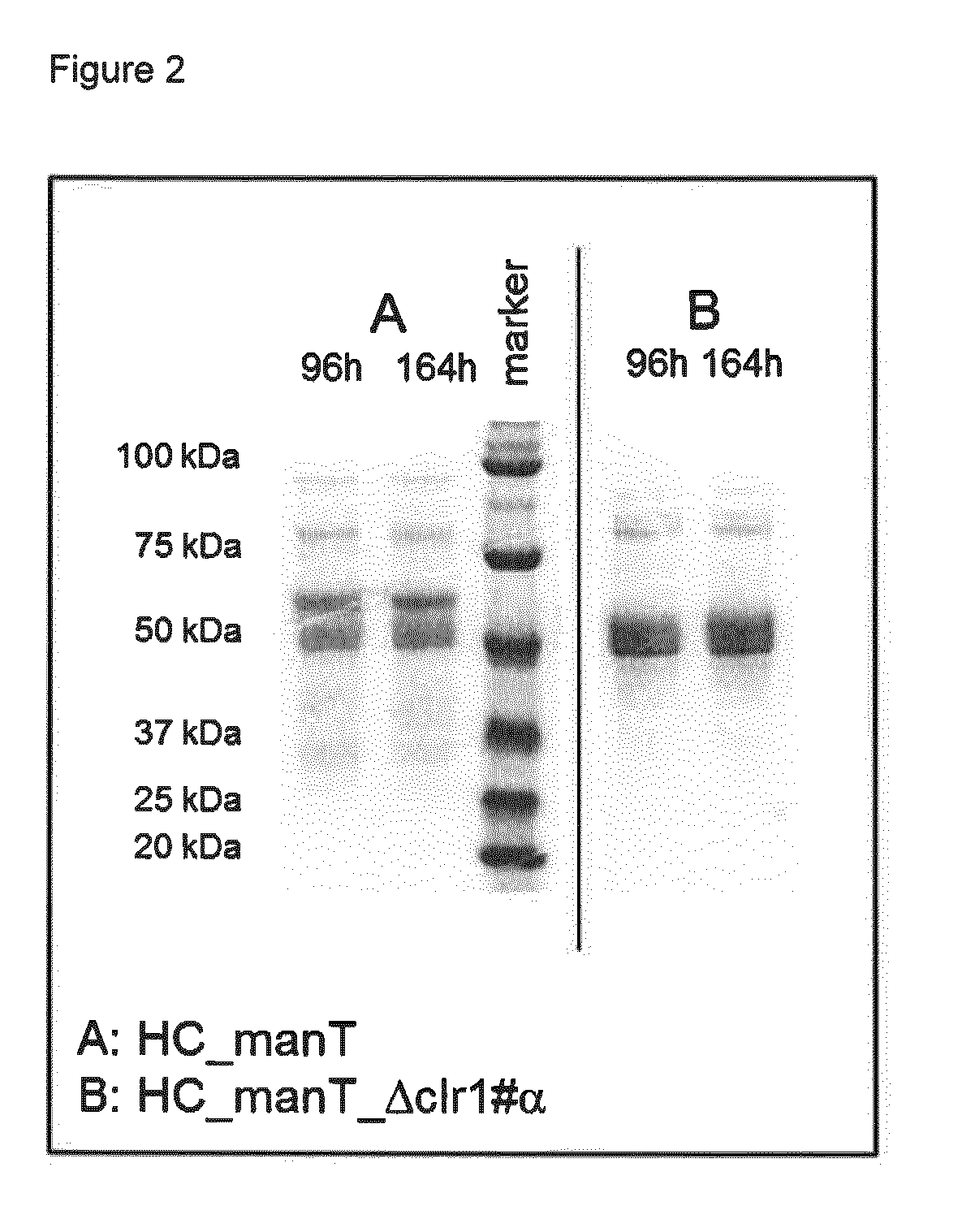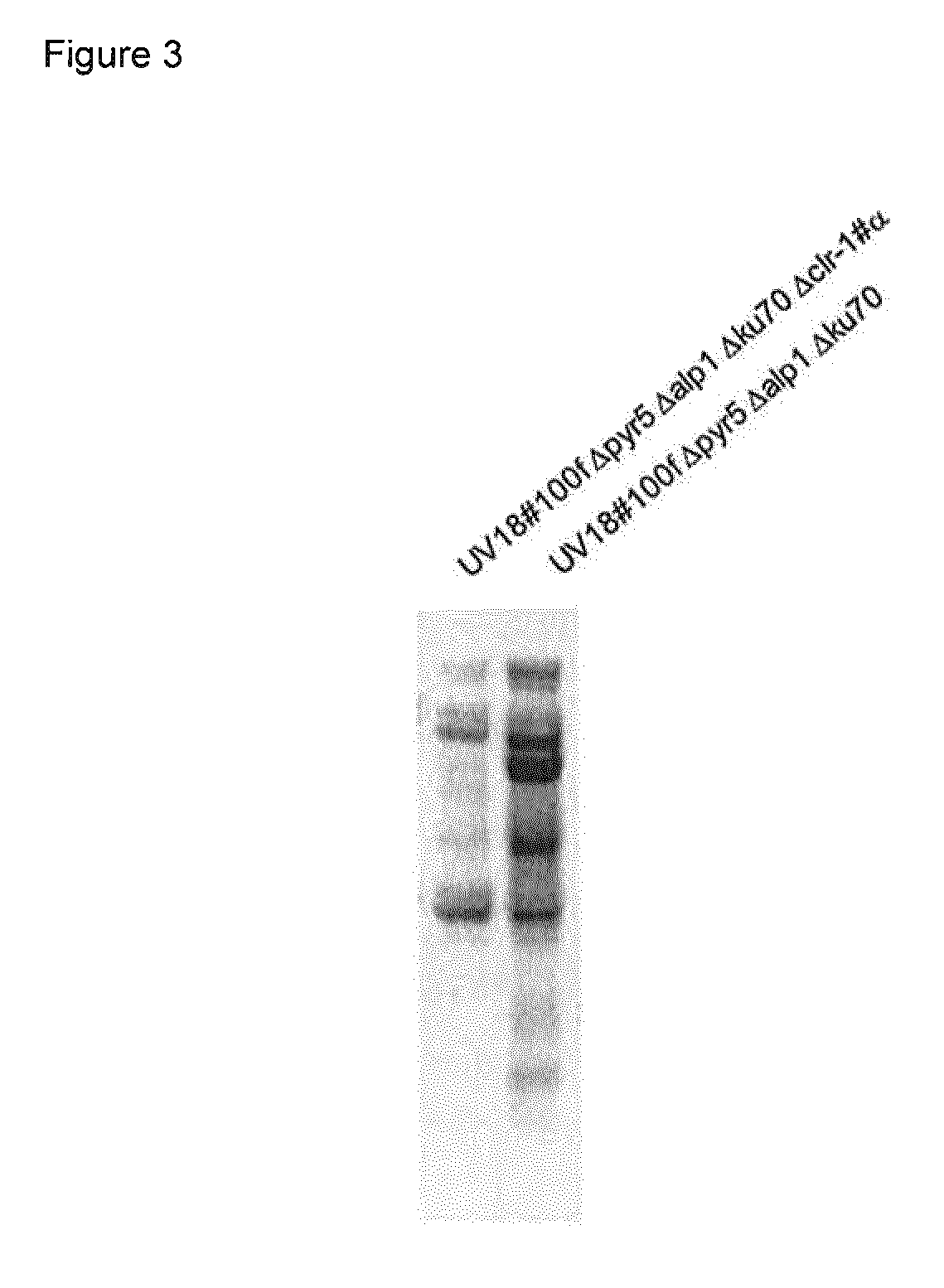Method of producing proteins in filamentous fungi with decreased clr1 activity
a filamentous fungus and protein technology, applied in the field of filamentous fungi protein production with decreased clr1 activity, can solve the problems of complex purification schemes and undefined protein products, and achieve the effects of reducing or eliminating the activity of a transcription factor, reducing or eliminating the activity of a protease, and reducing or eliminating the activity of clr1
- Summary
- Abstract
- Description
- Claims
- Application Information
AI Technical Summary
Benefits of technology
Problems solved by technology
Method used
Image
Examples
example 1
Transformation of Myceliophthora thermophila
[0150]Several methods for the transformation of M. thermophila protoplasts are described in the literature (WO 00 / 20555, US 2012 / 0005812, Verdoes et al. (2007) Industrial Biotechnology 3(1): 48-57).
[0151]Protoplasts of M. thermophila strains were prepared by inoculating 100 ml of a standard fungal growth media with 106 spores / ml in a 250 ml shake flask for 24 h at 35° C. and 250 rpm. The mycelium was harvested by filtration through a sterile Myracloth filter (Calbiochem) and washed with 100 ml 1700 mosmol NaCl / CaCl2. The washed mycelium was transferred into a 50 ml tube and weighed. 3 ml fresh prepared Caylase (Cayla, France) solution (20 mg / ml Caylase in 1700 mosmol NaCl / CaCl2) were combined with 3 g of mycelium and 15 ml of 1700 mosmol NaCl / CaCl2 and mixed. The mycelium suspension was incubated at 37° C. and 70 rpm for 2-4 h until protoplasts are visible under the microscope. Harvesting of protoplasts was done by filtration through a st...
example 2
Generation of Deletion Constructs
[0161]The split-marker method, known in the art, was used for the production of knock-out mutants of the different genes. 1000-2000 bp of the 5′ and 3′ homologous regions (“flank_A″ and “flank_B”) of the gene to be disrupted were amplified by PCR from the genomic DNA of Myceliophthora thermophila and cloned into plasmids carrying a part of the split marker gene using standard methods known in the art. Each marker fragment is not functional on its own, but becomes functional after recombination of the overlapping part of the two marker fragments split on the two plasmids. The amdS gene encoding the acetamidase from Aspergillus nidulans which is well known in the art was used as a selection marker.
[0162]Optionally, the deletion plasmid carrying the C-terminal part of the amdS split marker was constructed in a slightly different way. Instead of flank_B, which targets the deletion cassette, the plasmid contained flank_A and flank_B in direct contact. The...
example 3
Generation of Enzyme Expression Cassettes
[0182]a) manT Expression Plasmid
[0183]The codon adapted synthetic gene (GeneArt, ThermoFisher Scientific Inc., USA) manT (SEQ ID No. 24) encodes for an engineered and truncated variant of a mannanase (SEQ ID No. 25) originally derived from Trichoderma reesei, which lacks the CBM domain and where the native signal peptide is replaced by the signal peptide from a cellulase of M. thermophila.
[0184]For the overexpression of the mannanase manT the general expression vector pPchi(1.8)-Tcbh1_Notl was used. The plasmid uses the promotor of the chi1 gene and the terminator of the cbh1 gene from M. thermophila to drive the expression of the gene of interest. A detailed description of the plasmid is given in WO 2010 / 107303. Using standard cloning techniques, the manT expression plasmid pChi1-manT (SEQ ID NO: 26) was constructed. The plasmid contained the promotor sequence Pchi from bases 6871-1813, the manT coding sequence including the signal sequence...
PUM
| Property | Measurement | Unit |
|---|---|---|
| Density | aaaaa | aaaaa |
| Dimensionless property | aaaaa | aaaaa |
| Dimensionless property | aaaaa | aaaaa |
Abstract
Description
Claims
Application Information
 Login to View More
Login to View More - R&D
- Intellectual Property
- Life Sciences
- Materials
- Tech Scout
- Unparalleled Data Quality
- Higher Quality Content
- 60% Fewer Hallucinations
Browse by: Latest US Patents, China's latest patents, Technical Efficacy Thesaurus, Application Domain, Technology Topic, Popular Technical Reports.
© 2025 PatSnap. All rights reserved.Legal|Privacy policy|Modern Slavery Act Transparency Statement|Sitemap|About US| Contact US: help@patsnap.com



